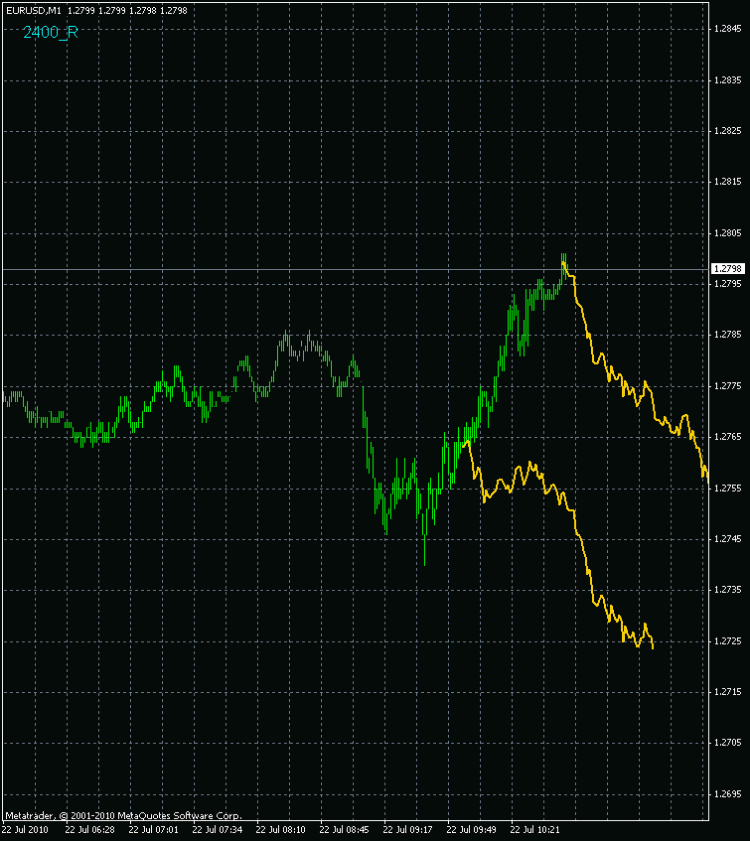You are missing trading opportunities:
- Free trading apps
- Over 8,000 signals for copying
- Economic news for exploring financial markets
Registration
Log in
You agree to website policy and terms of use
If you do not have an account, please register
If you squeezed a prediction out of the deductor on minutes, kudos to you.
I didn't get anything below half an hour.
Exp for deductor:
Thank you.
Can the Exp.ded script to which the expert refers, or at least a "layout" of the script without the secret stuffing, so to speak, be posted here.
The archive contains the script, deductor file, text files; EURUSD forecast on M1 period, sliding window 2200 CLOSE.
Anyway, I attached a script from the archive to my Expert Advisor (thanks again, Zar). And I got such a mysterious picture:
What could this mean?
If you squeezed a prediction out of the deductor on minutes, kudos to you.
My prediction did not work below half an hour.
I've given up the deductor because of bad forecasts, and here I'm putting my old groundwork to myself so it won't get lost, maybe I'll try it again sometime in the future...
Checked s2200_Close again, it works :)
It takes almost an hour to retrain on new data :)
Another option: Analysis in turn of 6 timeframes, 40 sec each
s600_Close.
Last option: analysis based on HCL 8-period data
s7_m1, input from M1 to W1 (High Close Low)
You obviously didn't understand the problem ;)
The point is that we want to see a forecast for several bars (to see the long-term price "trend") and not one bar in advance. All figures in the forecast are calculated for the next bar only. For further figures they should be given initial data which we do not have yet (because we are forecasting it). If we check our forecast by taking existing data (like checking the accuracy of forecasts), then we can input values on bars in the future (Tc+1, Tc+2, Tc+3,.....) with input data from known to us from history, ie implicitly we look into the future that we do not know and only want to make a forecast.
To sum it up: if we want to get a fair forecast, we should use values calculated during the previous step of the forecast. I.e.: the first forecast value is calculated with the last known live data. The next value is calculated from the previous (first calculated) value, and so on. And only after all this, the data are compared with the real historical data.
If we take the conditional task of MA value prediction using known OHLC, it cannot be solved correctly for several bars ahead. You will calculate only one next value of MA, to calculate the second forecasted value of MA you should use new OHLC from the bar which you do not have (because you have calculated MA for it and OHLC was not forecasted and not calculated). If you take OHLC from the "test" history - it means that you have looked into the future. That's where the rake lies :(
There is nothing new about the deductor. Back in 1976 Box gave the theory and in the early 80's the STATISTICA package was developed, which is still in use today. The purpose of time series analysis in this package is to predict time series. If you look around, this package (like the deductor) is good at predicting the continuation of a trend by clearing the BP series of noise and taking seasonal cycles into account. The problem is not in forecasting, but in fact it only works for stationary VR, but VR series are non-stationary. That's why we can only trust the forecast as a continuation of the trend. Turns cannot be predicted and there are no problems with trend forecasting.